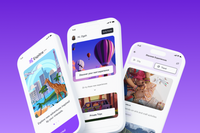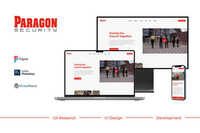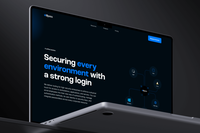Hire Freelance Presentation Designers
Darrell Estabrook
Darrell has over 25 years of experience designing engaging and productive apps for customers and business employees. He's led the design for a mobile enterprise app that replaced a legacy, paper-based process for a national auto retailer. Darrell specializes in turning big-picture thinking into practical visual experiences. His creative, purpose-driven design approach helps business leaders realize their vision.
Show MoreOgeh Ezeonu
Ogeh has been working in the design industry for over five years, with hands-on experience creating digital products for retail and businesses. She is skilled in user experience design, user interface design, product strategy, and innovation for web and mobile applications. Having worked with clients in various industries, Ogeh is passionate about creating engaging products for businesses and enabling users to interact directly with their brands.
Show MoreFrederic Savioz
Frederic is a senior art director and creative director with more than 20 years of experience in branding, UI design, and advertising. He worked for various industries, including FMCG, banks, insurances, pet food, B2B, cryptocurrencies, startups, and more. He can count Nike, Adobe, Afla Romeo, Absolut Vodka, Jägermeister, and Volkswagen as clients. After gaining a master's in interactive art direction in Stockholm, Frederic founded the Kids—a digital and communication studio.
Show MoreOlha Bahaieva
Olha, a lead designer with 9+ years of specialization in web and UI/UX design, is a recipient of many prestigious awards, including the Indigo Design Awards and CSSDesign Awards. Her innovative prowess shines through in delivering cutting-edge solutions for distinguished clients such as Dish Network, Human Agency, and Growth Channel. Founder of UX Designers Club, a design course and book author with 1+ million views and a top 1% ADP List mentor, Olha's is focused on user-centered products.
Show MoreSkand Bhandarkar
Skand is the winner of Design4India Award 2018, presented by Adobe and Facebook in the Web category. He has been working in the design field for the past 13 years, with nine years in the UX/UI field. Skand specializes in user interfaces, wireframing, and prototyping. He has worked with companies like HP, Paramount Pictures, and Avis Car Rental. Skand has designed complete web, social, and print identities for clients worldwide.
Show MoreSaurabh Mathur
Saurabh is a UX/UI designer with over 14 years of experience—designing for platform-specific iOS and Android apps and the responsive web. He excels at helping with product strategy, micro-copy, and motion prototyping (Principle, Framer). He's also worked with multiplatform scrum teams using the agile approach. In his career, Saurabh's worked at SlideShare (LinkedIn) and Babbel and co-founded two startups in the B2C/B2B space.
Show MoreAlex Kukharenko
Helping startups scale with cutting-edge design, Alex is a multidisciplinary product designer with skills in 3D and animation. As a product designer, he works with visual design, dashboards, UX design, 3D, and motion design. Alex is also a big fan of rapid prototyping since it gives designers many ways to validate the idea before implementing it.
Show MoreChristopher F. Thomas
Chris is a product designer with several years of experience. His focus is on communicating his client's needs with simple, concise, and intuitive designs. Chris is comfortable and experienced with explaining his design process to startup founders, enterprise shareholders, and cross-functional teams alike.
Show MoreJeffrey Davis
Jeffrey has been working alongside entrepreneurs to help build their businesses for more than half a decade. Most recently, he has worked with a digital agency in London called Grampy. For those two years, he traveled the world consulting with C-level executives and building digital experiences for leading brands.
Show MoreMichael Dedrick
In Michael's world, users always come first. He possesses the proven ability to develop highly-effective strategic marketing collateral for high-end clients, including Apple, IBM, L’Oreal, Fidelity, Bud Light, Home Depot, Costco, and Walmart. He's committed to connecting with clients and users—and bringing their vision to life effectively across a broad, far-reaching spectrum of media.
Show MoreAna Marija Lach
Ana is a UX/UI designer with several years of design experience and a career specializing in digital interfaces and design systems, primarily for dashboards and mobile apps. She loves working with content, analyzing, and making strategic design and user-centered decisions. Ana then transforms these into concepts then wireframes, mockups, and prototypes that all lead to the development of intuitive digital products with seamless user experiences.
Show MoreDiscover More Presentation Designers in the Toptal Network
Start Hiring











































































